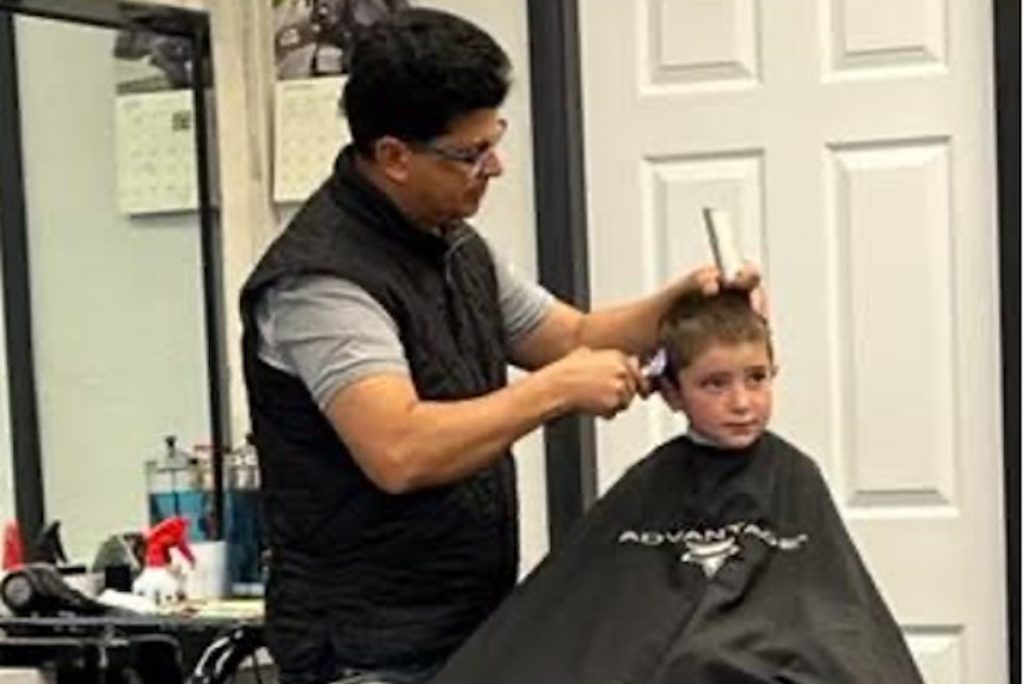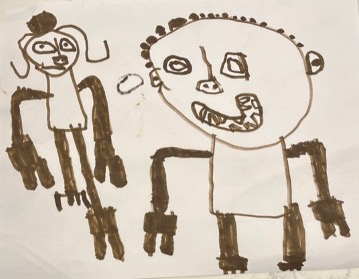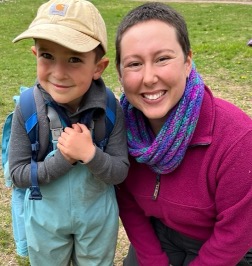Buzzers are for Everyone! – Embracing Conversations with Young Children


Barbershop day is always an exciting one for my two young boys: fresh haircuts and a lollipop, what a nice way to start the weekend. Last month, as Michael, my 5-year-old son, sat in the chair, he noticed a sign with a large line through some of the words.
Michael inquired, “Why is there a line over there on your sign?”
His barber, Carlos, replied, “I don’t cut long hair anymore in my shop, so I crossed out the part that says, ‘women’s haircut.’”
Michael nodded and sat quietly for about five minutes as his barber continued to cut his hair. Then, Michael asked in a matter-of-fact tone, “My teacher is a girl. She has a buzzer cut. Can you cut her hair? She needs a buzzer.”
Carlos paused and smiled before he replied. “Yes. Yes, Michael, I could. I guess I should change my sign to ‘long hair.’ I don’t cut long hair anymore. I could cut your teacher’s hair because her hair is short.”
Michael looked back to him with a satisfied look on his face and smiled. The pair continued to chat as Carlos finished his haircut.
 Once we got home, I talked with Michael a little more about his conversation with Carlos and let him know I was impressed that he asked a question when he felt something seemed unfair. I invited Michael to record his ideas in a drawing. Michael described his drawing, and I recorded his words: “Some girls like shaved hair. They need a buzzer cut too. Some girls like long hair. Some boys like long hair. Some girls put it on top of their head like my mom. You can do it how you want.” (To my dismay, it seems my messy bun appears to be my signature look these days!)
Once we got home, I talked with Michael a little more about his conversation with Carlos and let him know I was impressed that he asked a question when he felt something seemed unfair. I invited Michael to record his ideas in a drawing. Michael described his drawing, and I recorded his words: “Some girls like shaved hair. They need a buzzer cut too. Some girls like long hair. Some boys like long hair. Some girls put it on top of their head like my mom. You can do it how you want.” (To my dismay, it seems my messy bun appears to be my signature look these days!)
Afterwards, Michael and I hung his drawing on his display board and he and his brother spent the afternoon playing “barbershop” and experimenting with their pretend buzzer on my hair.
Finding Joy in Differences and Similarities
Young children attach value and social meaning to their experiences through the responses they receive from others. Celebrating, embracing, and noticing individual differences with children helps us establish trusting relationships and makes each child feel seen, respected, and valued.
 Michael loves his teacher, and she is an important person in his life. Michael’s question about her being able to visit his barbershop is a testament to their strong relationship and his ability to notice and appreciate physical similarities and differences. When Michael’s barber listened to his concern and responded in an inclusive manner, he sent Michael the message that all people, including the important people in Michael’s life, are welcome in his barbershop. Through their very natural conversation, both Michael and Carlos learned and grew from one another.
Michael loves his teacher, and she is an important person in his life. Michael’s question about her being able to visit his barbershop is a testament to their strong relationship and his ability to notice and appreciate physical similarities and differences. When Michael’s barber listened to his concern and responded in an inclusive manner, he sent Michael the message that all people, including the important people in Michael’s life, are welcome in his barbershop. Through their very natural conversation, both Michael and Carlos learned and grew from one another.
Engaging in Conversations With Children
Supporting children in developing self-awareness, finding joy in differences and similarities, recognizing fairness and unfairness, and empowering children to speak up are all crucial aspects of nurturing a sense of community in the early childhood classroom. Although these topics can seem daunting, when we pause and listen to what children notice about the world around them, create an atmosphere in which children can freely ask questions, and lean into children’s natural curiosity, we can facilitate profound thinking and learning for both children and adults. Essentially, conversations and opportunities to facilitate learning can happen anywhere and at any time. It’s what adults do in these moments to encourage and celebrate the discourse that matters.